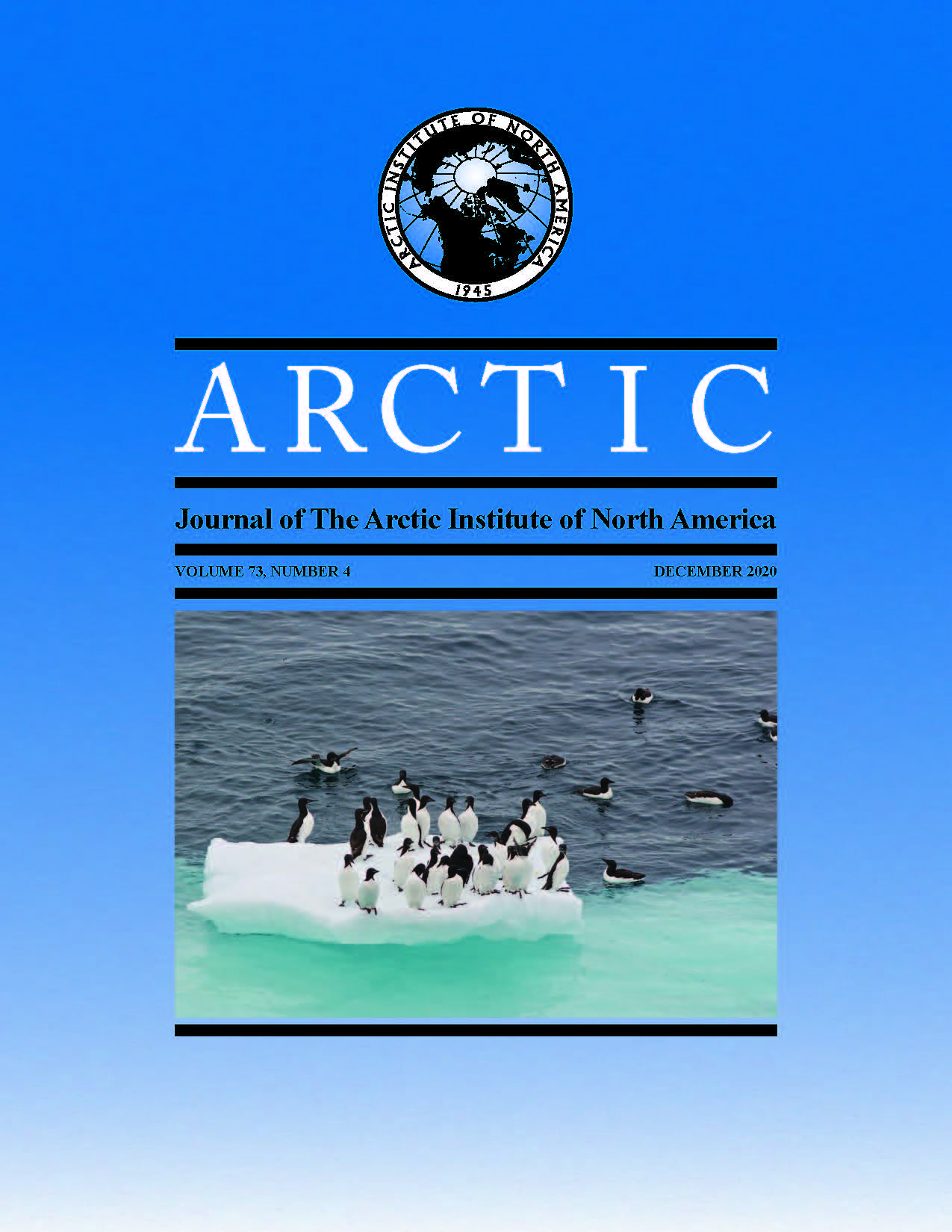Climate-Change Induced Permafrost Degradation in Yakutia, East Siberia
DOI :
https://doi.org/10.14430/arctic71674Mots-clés :
Yakoutie; relevés météorologiques; réchauffement; pergélisol; lacs thermokarstiques; alas; hydrologie; risques géoenvironnementaux; développement régionalRésumé
Le changement climatique actuel dans les régions du nord est un phénomène bien connu. Dans le centre de la Yakoutie (République de Sakha), la tendance à long terme affiche une augmentation annuelle moyenne constante de la température de l’air (MAAT) de – 9,6 ˚C (1980) à – 6,7 ˚C (2019), correspondant à une augmentation annuelle moyenne de 0,07 ˚C, avec des anomalies de température prononcées au cours de la dernière décennie. Les relevés météorologiques analysés au cours des 40 dernières années indiquent un schéma de changement climatique progressif d’augmentation du MAAT et de la précipitation moyenne annuelle (MAP) qui se produisent sur des cycles de cinq à sept ans. Les interactions complexes des variations climatiques régionales avec les conditions géologiques et environnementales locales influencent l’équilibre thermique du sol gelé qui, à son tour, influe sur le développement des thermokarsts. Des facteurs co-agissants d’augmentation de la température et de taux de précipitation plus élevés activent la dynamique des lacs thermokarstiques et l’expansion des lacs après les années précédentes riches en neige et en précipitations. Le mois d’avril connaît la plus grande tendance au réchauffement, avec la hausse actuelle (2020) de 5 ˚C par rapport à 1980 et le raccourcissement de la saison d’hiver. Le réchauffement climatique, les incendies de forêt naturels et les activités anthropiques (pratiques pastorales et exploitation forestière) contribuent à l’ouverture du paysage de la taïga en raison d’un albédo réduit et d’une plus grande exposition au rayonnement solaire. Le réseau hydrologique régional subit une restructuration causée par les eaux de fonte drainées libérées de la cryolithozone dégradée avec des pics de débit fluvial à la fin du printemps et au début de l’été, produisant ainsi une érosion des berges. Les effets négatifs du dégel progressif observé en particulier dans les plaines présentent des risques pour les établissements locaux et génèrent des problèmes environnementaux et d’ingénierie majeurs dans les régions du centre et du nord de la Sibérie, autrefois stables au pergélisol.


